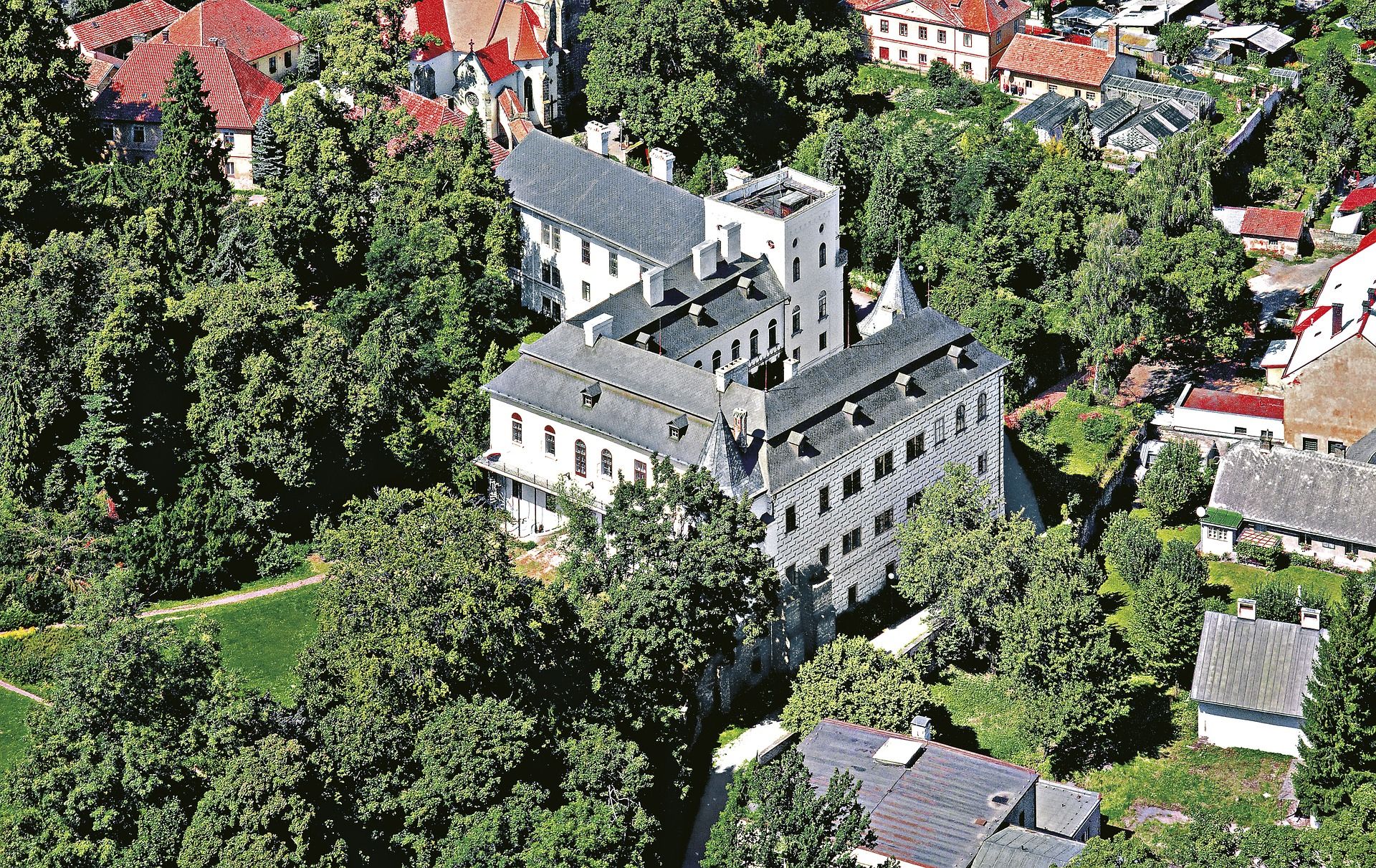Teritoriální pakt zaměstnanosti Pardubického kraje, z.ú.
(Territorial Employment Pact of Pardubice region, an institute)
Interview with František Janeba, Project manager and Josef Šváb, Employment manager
Sector
Quinary: government, decision making
Country
Czech Republic
Web-site
https://www.tpzpk.cz/
Specification
The Territorial Employment Pact of Pardubice region focuses on three primary strategic directions – economic development, employment, and social inclusion. It is a broad partnership of institutions and experts aiming at establishment and implementation of a set of measures/projects promoting employment and education of inhabitants of Pardubice region. It aims at enhancement of innovative potential of the region focusing on support of development and maintenance of the new and existing working positions. It also aims at developing a base for human resources; supporting technical, professional and handicraft training and education. It wants to enhance support of business, entrepreneurship and creativity, as well as retraining, and the related education. The goal of the Employment Pact within the platform of partnerships and cooperating subjects plus experts is developing a comprehensive programme for promotion of employment in the Pardubice region, and increasing absorption capacity of the region through successfully allocated financial resources.

Main motives for the decision to implement the age management measures
We were aware of the gaps within the human resources management, we were sure it called for a systemic solution. At the same time there was launched a call for proposals of the Ministry of Labour and Social Affairs for implementation of age management measures in company practice, so we took advantage of it.
Age management dimension
Comprehensive approaches: a holistic approach that encompasses all dimensions of age management
Expected results
The main goal of the project is increasing adaptability of ageing employees and enhancing professional knowledge, skills and competences of employees according to the labour market, especially with regard to Industry 4.0. It also aims at implementation of age management principles including organisation of necessary training and research, as well as at definition of strategies aiming at implementation of AM principles within company management.
Our way towards the age management
Human resources management in such a small organisation, with about 5 to 15 employees, and with regard to number of the currently ongoing projects, is quite easy to imagine. Everyone has to be part of everything in such a company, there is no sole „human resourcer“ there, problems are solved ad hoc, when necessary. We knew we were lacking a system, a system identifying the management system within organisation making sense to all the employees obeying it.
Four years ago, me and my colleague took part in a Towards successful seniority course, thanks to which we became accredited lecturers of these courses. This introduced us to the field of age management. Our studies brought us to a conclusion that implementation of the age management principles within the organization could stabilize the staff, for example preventing termination of employment by an experienced employee trained within the company, primarily due to insufficient human resources management of the company. We have identified more similar insufficiencies within human resources management of our company. Implementation of a system incorporating the age management principles seemed to be valuable.
We have opted for a consistent project dealing with a complex view of age management at all levels. Within the project we defined many activities; some of them pointed towards insufficiencies of the management system we were aware of; others having arisen from results of the initial age management audit.
Management of such a project is done on two levels. The first a formal implementation of the project, i. e. fulfilment of key activities, their monitoring, evaluation and reporting – that is „an operational or executive level“. The second level reflects a global vision based on the age management audit, it includes the substance – that represents „a creative and inspiring part“. That is the part within which we defined the following key activities, which were gradually fulfilled.
1 – Age management audit – analysis of the current situation in human resources management
2 – Educational activities in the sphere of age management for employers and employees – activities focusing on coaching and mentoring within the sphere of age management; guidance and counselling accompanying implementation of the age management concept into the company practice
3 – Elaborating strategies and plans of implementation of age management within the company; development of personnel strategies with regard to needs of various working generations; abilities and potential of the employees; elaboration of personnel strategies
4 – Elaboration and provision of company training programmes focused on age management, including training of company lecturers and instructors
5 – Professional training based on the identified needs related to age management
6 – Utilisation of tools measuring work ability and human resources strategies
7- Preventive measures directed at maintenance and strengthening of work abilities of employees of all generations
8 – Activities focused on intergenerational change with regard to specific needs of individual working age groups
9 – Implementation of measures focused on ergonomics of work and working conditions, enhancement of employee´s fitness and healthcare, ergonomic audit
10 – Educational activities related to age management and meeting of demands of Industry 4.0
All these activities were performed and finished in such a way, that they were outlined and formalised as parts of the system. We are about to select some of them to become part of the strategic goals of the organisation. We plan to incorporate this entire system into the management system of the organisation, however this will have to be taken step by step while currently evaluating its benefits. Eventually we would carry out changes of the incorporated segments on the basis of a feedback.
Strengths and weaknesses of the chosen approaches
Strengths:
- This project enabled us to deal with age management in a systematic and comprehensive way as well as integrating it with preparation of a digital system.
- Thanks to the complexity and interconnection of all the activities, we managed to elaborate the competence matrix, or the succession plan, which we did not encounter with up to now.
- Without the grant, we could not afford to implement many activities consisting of sub deliveries by professional companies. In other words, thanks to the project financed by the European Social fund we managed to avoid realisation of some parts of the project ourselves, in an inexperienced way.
Tha “aha!” moment experienced during the process
Even though at the beginning of the project I doubted whether we would be able to prepare bases of such a system fully usable by our organisation. But now I am quite sure that the system is functional and understandable. It can be beneficial for the human resources.
Monitoring system of the effects
The way this project was set, it does not require any further monitoring, as its goals were almost completely fulfilled. The system was established and provided the basis for its further development. The following step will be by incorporation of these documents into the cloud information system, which shall represent a higher level of meeting of our strategic goals. This system shall further monitor individual users; they shall be automatically notified and evaluated. This shall ensure monitoring as well as support of functionality of the entire system.
Activities to sustain this initiative
Even though maintenance of the new system was not part of the project itself, we were considering it during the entire implementation.
The system currently exists in the form of paper and electronic documents elaborated in such a way, so that they can be consequently incorporated into the prepared cloud applications. It shall enable elaboration of interactive summaries and forms available 24/7 to all authorised personnel. The employees could continuously plan their activities using these and their bosses could eventually make adjustments or approvals, so that the system would automatically send notifications about the approaching events etc. I believe that this will enable easier implementation of the system within the organisation.
Beneficial effects of the initiative
The project reflected the need of introducing the Age Management principles into the company management. Realisation of the key activities established measures leading to strengthening and maintenance of work ability of our employees. The project enables us to start a process of implementation of changes within the company management system. It also provided us with a unique chance to clarify the direction towards which we want to progress working with our employees.
It consisted of many activities requiring measurement, research, or introduction of steps of an actual process. Such activities were included into the project in order to provide a complex view of the current personnel work within the organization and identification of possibilities of its optimal development. Random selection of the most important ones:
- An initial age management audit: We have identified our score in the individual pillars of age management and overall evaluation. We have confirmed, just as we were expecting, that our score was pretty low.
- Education system: We have introduced elaboration of plans of systemic training and a bonus in the form of such a training. Even though we have been continuously taking part in various courses, we did not have a systemic approach.
- The succession plan for key positions: We have identified key employees and their needs prior to retirement.
- Industry 4.0 competences: we have elaborated a matrix of competence for individual working positions and thanks to that and the education plans the employees may further choose such training with regard to future requirements.
- Measuring work ability: The employees were introduced to the concept of measurement of the work ability. Then they participated in individual and group interviews, on the basis of which such work ability was evaluated for individual employees. Results, i.e. the measured work ability and individual recommendations were provided to each employee. The employer obtained a summary report for the entire personnel including recommendations.
- Ergonomic audit: Thanks to this we managed to define individual workplaces and recommend their adjustment in order to meet the ergonomic requirements.
Personal recommendation
Considering implementation of the age management measures within a small organisation two years ago, I would doubt a real need for such a system within a small organisation. However now, after going through all the key activities of the project, as the system is unified, I am absolutely sure that age management principles are beneficial for management of such an organisation. I could recommend this, based on my own experience, to small organisations. They should introduce themselves to age management principles and consider incorporation of such principles into their own human resources management. I am sure that every employer, regardless of the size of the organisation, can implement this into their system of human resources management. The organisation shall not lose, it can only gain.
1 Towards Successful Seniority™ is a group method during which the participants recognize their own strengths and needs for development, and set the personal goals for their future careers. Within the group the participants manage to identify how to balance the demanding work of a school leader with family, time for relaxation and other essentials of life. Read more about this method in the Example 25 from the sheltered housing Naplno.
Note: This project was currently in the period of implementation, therefore it is not presenting results for Age Management as such. However it is a good example of processes useful during implementation of Age Management into company practice and its further benefits for the entire company.
